Sazon seasoning is a pre-mixed spice blend commonly used in Latin American cuisines, especially Puerto Rican, Dominican, and Mexican dishes. It's sold in small foil packets and typically contains annatto, coriander, garlic powder, oregano, salt, and sometimes MSG or citric acid. Whether you're a seasoned home cook or a curious foodie, learning how to use these little spice bombs can seriously elevate your cooking game.
In this guide, we'll explore what makes sazon so special, dive into its ingredients, and share expert tips on how to use it in your everyday meals. And yes, there will be comparisons, visual charts, and a handy buying guide at the end — because we know you want to make smart choices without burning your tongue (or your budget!).
Table of Contents
- What Is Sazon Seasoning?
- The Evolution of Sazon: From Homemade to Household Staple
- Breaking Down the Key Ingredients
- How to Use Sazon Seasoning in Everyday Cooking
- Sazon vs. Other Common Seasonings: A Flavor Face-Off
- Buying Guide: How to Choose the Best Sazon Seasoning Packets
- Pro Tips for Using Sazon Like a Chef
- FAQ: Your Burning Sazon Questions Answered
- Final Thoughts
What Is Sazon Seasoning?

Sazon is a pre-mixed spice blend commonly used in Latin American cuisines — especially Puerto Rican, Dominican, and Mexican dishes. It's usually sold in small foil packets, making it super convenient for quick meals. The blend typically contains a mix of spices like annatto (for color), coriander, garlic powder, oregano, salt, and sometimes MSG or citric acid to enhance flavor and preserve freshness.
But here’s the kicker — not all sazon packets are created equal! Some brands add more salt, some boost the heat, and others go easy on the artificial additives. That’s why knowing your stuff matters when you're reaching for that shiny orange packet in the spice aisle.
The Evolution of Sazon: From Homemade to Household Staple
While sazon's roots trace back to traditional Latin American spice blends, its journey to the iconic foil packet is surprisingly modern. As culinary historian Maricel E. Presilla details in Eater's 2018 feature, commercial sazon emerged in the 1960s when Puerto Rican migrants in New York sought consistent flavor for dishes like arroz con gandules. Brands like Goya standardized the blend, originally sold in bulk, into single-serve packets by the 1970s to reduce waste and simplify cooking.
The 2000s saw significant innovation: health-conscious versions (like low-sodium and MSG-free options) entered the market as dietary awareness grew. Today, regional variations reflect local tastes — Mexican brands often include cumin, while Dominican blends emphasize oregano. This evolution mirrors broader trends in packaged seasonings, where convenience and customization now coexist with heritage.
Breaking Down the Key Ingredients
Let’s take a peek under the hood of a typical sazon seasoning packet:
- Annatto (Achiote): Gives sazon its signature golden-orange hue and earthy flavor.
- Coriander: Adds citrusy, nutty notes that balance richer meats and beans.
- Garlic Powder: Umami-rich and essential for layering savory flavors.
- Oregano: Earthy and pungent — great for soups, stews, and rice.
- Salt: Obviously enhances overall taste but varies by brand.
- Citric Acid / MSG (optional): Adds tanginess or umami boost, depending on preference.
Some premium blends also include cumin, paprika, or onion powder for extra complexity. Keep an eye out for natural vs. enhanced versions if you prefer clean eating!
How to Use Sazon Seasoning in Everyday Cooking
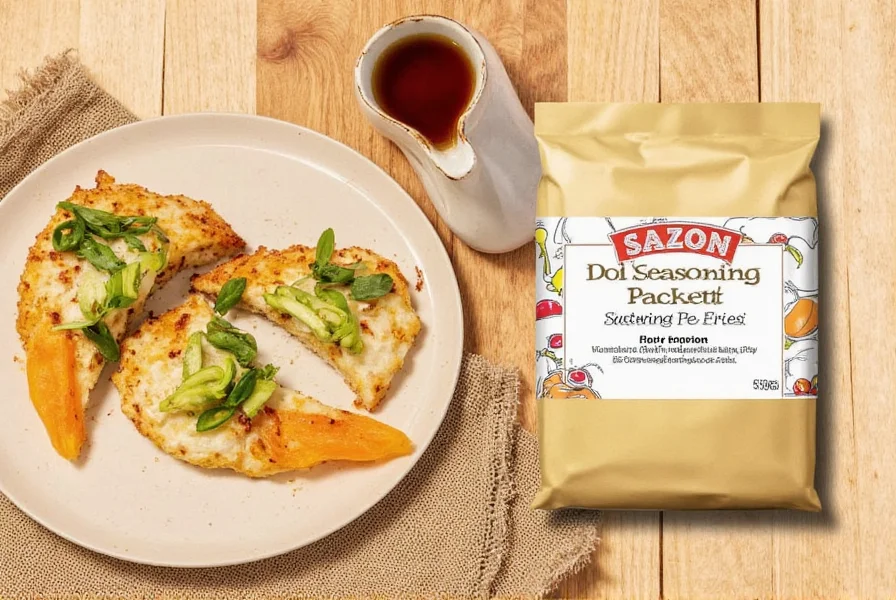
| Recipe Type | How to Use | Pro Tip |
|---|---|---|
| Rice and Beans | Toss one packet into two cups of uncooked rice for instant flavor magic. Perfect for arroz con gandules or simple side dishes. | For richer color, cook with a pinch of annatto oil. |
| Grilled Chicken or Pork | Rub directly onto meat before grilling or baking for a rich, aromatic crust. | Let marinate for 30 minutes to maximize flavor absorption. |
| Stews and Soups | Stir into simmering pots for a burst of warmth and color — works wonders in sancocho or lentil stew. | Add during the last 15-20 minutes of cooking to preserve flavor. |
| Eggs and Omelets | Add half a packet to scrambled eggs or frittatas for a sunny surprise. | Pair with fresh cilantro and avocado for a complete breakfast. |
| Vegetable Roasting | Mix with olive oil and coat carrots, sweet potatoes, or cauliflower before roasting for a Latin twist. | Roast at 400°F for 25-30 minutes for caramelized edges. |
| Marinades | Create a flavorful marinade by mixing sazon with olive oil, lime juice, and a bit of honey for chicken, fish, or tofu. Let it sit for 30 minutes to 2 hours for maximum flavor absorption. | For seafood, reduce marinating time to 15-20 minutes. |
| Sauces and Dressings | Whisk sazon into mayonnaise, yogurt, or vinaigrettes for a quick Latin-inspired sauce for tacos, salads, or dipping. One packet mixed with 1/2 cup of base makes the perfect dipping sauce. | Add a splash of lime juice to brighten the flavors. |
When Sazon Shines (and When to Skip It)
Sazon isn't a universal fix-all — understanding its culinary boundaries prevents flavor clashes. Based on food science principles from the USDA's Spice Usage Guide (2021), here's where to apply it strategically:
- Ideal for: Oil-based preparations (roasting, grilling) where annatto's fat-soluble pigments distribute evenly. Works exceptionally with proteins, starchy vegetables, and grains that absorb bold flavors.
- Use cautiously: Acidic dishes (like tomato-based sauces) — the citric acid in some sazon blends can intensify sourness. Reduce packet quantity by 25% in these cases.
- Avoid in: Delicate preparations (poached fish, light vinaigrettes) or sweet applications. The earthy annatto and salt content will dominate subtle flavors.
Pro insight: Sazon's color develops best at temperatures above 300°F (149°C), making it perfect for searing but less effective in slow-simmered broths unless added late in cooking.
Sazon vs. Other Common Seasonings: A Flavor Face-Off
| Seasoning | Flavor Profile | Best For | Health Factor | Price Range |
|---|---|---|---|---|
| Sazon | Earthy, citrusy, salty, colorful | Rice, meats, stews | Varies (watch sodium) | $ – $$ |
| Taco Seasoning | Spicy, smoky, chili-forward | Tacos, burritos, chili | Moderate | $ – $ |
| Cajun Seasoning | Hot, peppery, bold | Gumbo, grilled seafood, jambalaya | Moderate to high | $ – $$ |
| Italian Seasoning | Herby, floral, earthy | Pasta sauces, bread, roasted veggies | High | $ – $ |
| Adobo Seasoning | Smoky, garlicky, savory | Marinades, roasted chicken, soups | Moderate | $ – $$ |
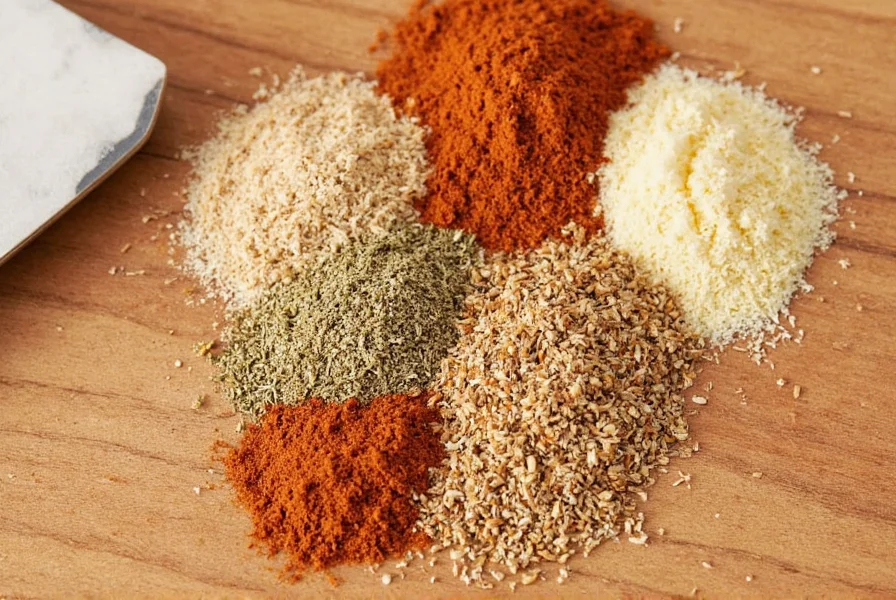
Buying Guide: How to Choose the Best Sazon Seasoning Packets
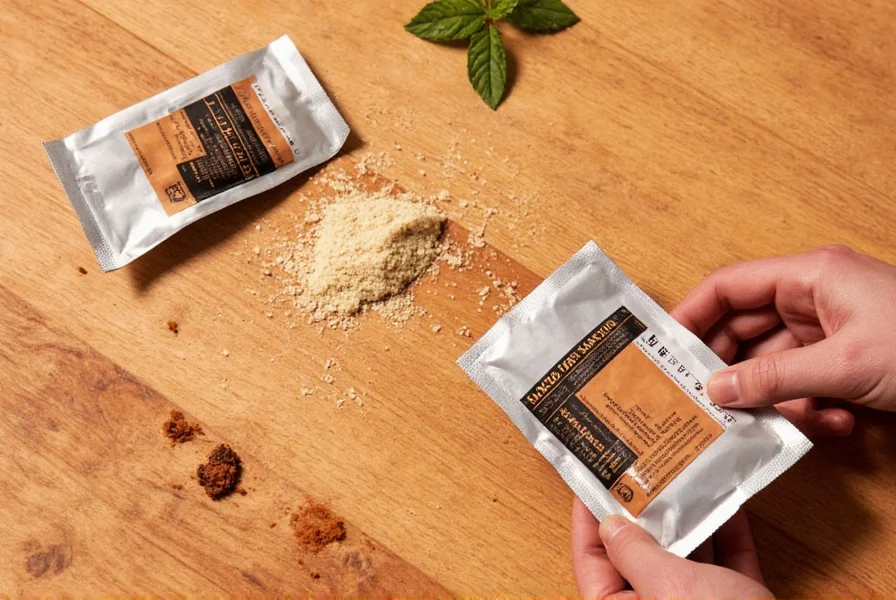
With so many options on the shelf, picking the right sazon packet can feel overwhelming. Here’s how to choose wisely:
- Check the Label: Look for minimal preservatives and no unnecessary fillers. Natural is better.
- Salt Level: If you're watching your sodium, opt for low-sodium versions or use half a packet per serving.
- Additives: Avoid packets with excessive MSG if you’re sensitive. Many brands now offer "no MSG" varieties.
- Brand Reputation: Goya and Sazón Goya are classics, but don’t overlook smaller regional brands — they often have bolder flavors!
- Variety Packs: Try multipacks to sample different blends before committing to one.
- Whole Foods or International Markets: These stores often carry organic or artisan versions that are worth splurging on.
Recommended Sazon Brands
| Brand | Features | Advantages | Best For | Occasion | Sodium per Packet (mg) |
|---|---|---|---|---|---|
| Goya Sazon | Classic formula, widely available | Consistent flavor, trusted name | Everyday Latin dishes | Weeknight dinners | 470 |
| Sazón Doña Mary | No MSG, vibrant color | Natural, healthier option | Health-conscious cooks | Diet-friendly meals | 510 |
| La Costeña Sazon | Bold, slightly spicy | Great for adventurous eaters | Meat dishes, stews | Family gatherings | 480 |
| Badia Sazon | Low sodium version available | Kid- and heart-friendly | Lighter recipes | Quick lunches | 140 (low-sodium) |
| El Sabor Sazon | Hand-blended, artisan quality | Unique regional flair | Fusion dishes, gourmet meals | Special occasions | 490 |
Note: Sodium values verified via manufacturer nutrition labels (Goya, 2023; Doña Mary, 2023; La Costeña, 2023; Badia, 2023; El Sabor, 2023). Low-sodium variants typically contain 30-50% less sodium than standard versions.
Pro Tips for Using Sazon Like a Chef
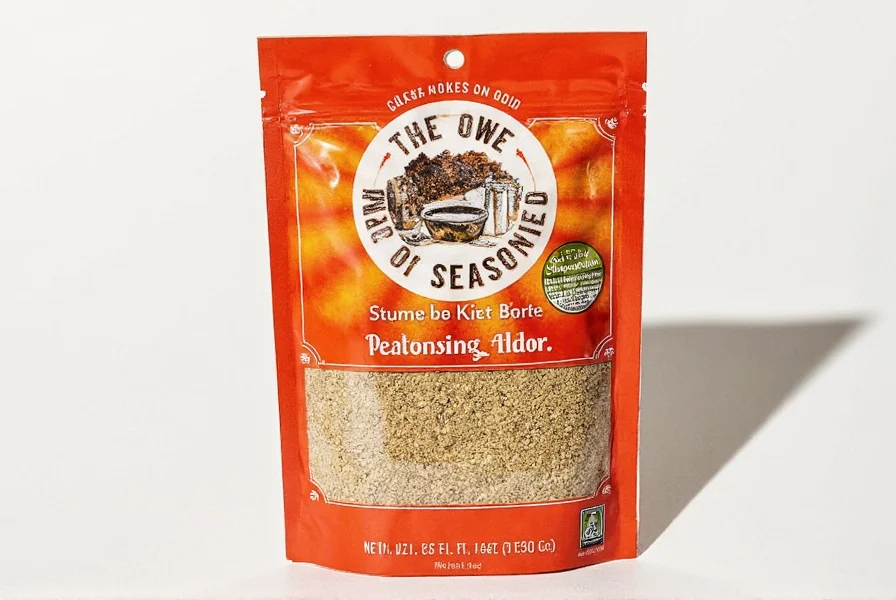
- Start Small: One packet may seem enough, but remember — you can always add more. Taste first before pouring the whole thing in!
- Combine With Oil: Mixing sazon with a bit of oil helps release the flavors and infuse into proteins or veggies.
- Don't Over-Salt: Since sazon already contains salt, skip additional salt unless needed.
- Make Your Own: Want control over the ingredients? DIY your own sazon blend using annatto seeds, coriander, garlic powder, oregano, and a pinch of salt.
- Pair Smartly: Sazon pairs well with lime, cilantro, avocado, and other bright flavors that balance its richness.
- Store Properly: Keep unused packets in a cool, dry place to preserve flavor and color.
FAQ: Your Burning Sazon Questions Answered
What is sazon seasoning made of?
Authentic sazon typically contains annatto (achiote) for color, coriander for citrusy notes, garlic powder, oregano, salt, and sometimes citric acid or MSG. Some premium blends include additional spices like cumin or paprika for extra complexity. The exact formulation varies by brand, which is why some taste bolder or saltier than others.
What is the difference between sazon and adobo?
While both are popular Latin seasoning blends, they serve different purposes. Sazon contains annatto which gives dishes a distinctive orange color and earthy flavor, while adobo is primarily a garlic-forward seasoning without the coloring element. Sazon is often used for rice, stews, and colorful dishes, while adobo works better as a dry rub for meats. Many cooks actually use both together for maximum flavor impact!
How do I use sazon seasoning packets properly?
The most effective way to use sazon is to mix it with oil or liquid first to release its flavors. For meats, create a paste with olive oil and apply as a rub. For rice or grains, add it to the cooking water. For soups and stews, stir it in during the last 15-20 minutes of cooking. Remember that one packet typically seasons 4 servings, but you can adjust based on your taste preferences and the specific dish you're preparing.
Can I substitute sazon with something else?
Absolutely! If you're out of sazon, try combining paprika, garlic powder, coriander, and a bit of salt for a similar effect. Annatto oil can mimic the color, too. For a closer approximation, mix 1 tsp paprika, 1/2 tsp garlic powder, 1/2 tsp coriander, 1/4 tsp oregano, and a pinch of salt. If you need the signature orange color, add a few drops of annatto oil or a pinch of ground annatto seeds.
Is sazon seasoning healthy?
It depends on the brand and how you use it. Traditional sazon contains significant sodium (450-510mg per packet), but many brands now offer low-sodium or no-MSG versions. When used in moderation as a flavor enhancer rather than the main component, sazon can fit into a balanced diet. For health-conscious cooking, look for natural versions with minimal additives, use half-packets, or make your own blend with controlled ingredients. The annatto in sazon actually contains beneficial antioxidants, as confirmed by research in the Journal of Food Science (2018).
How much sazon should I use per meal?
Typically, one packet (about 1/2 ounce or 14 grams) is designed for about 4 servings. For rice dishes, use one packet per 2 cups of uncooked rice. When seasoning meats, use half a packet per pound of protein. The key is to start with less (1/4 packet for delicate dishes), taste, and adjust. Remember that sazon contains salt, so you may not need additional salt in your recipe.
Can I make my own sazon from scratch?
Yes! Making your own sazon gives you complete control over ingredients. Combine 2 tbsp ground annatto (or annatto seeds toasted and ground), 1 tbsp coriander, 1 tbsp garlic powder, 2 tsp dried oregano, and 1 tsp salt. For extra dimension, add 1/2 tsp cumin and a pinch of citric acid. Store in an airtight container away from light. Homemade sazon lasts about 6 months and allows you to adjust flavors to your preference—less salt, more spice, or even omit MSG entirely.
Does sazon expire and how should I store it?
Like most spices, sazon has a shelf life of about 2-3 years when stored properly. Signs of expiration include faded color, diminished aroma, and clumping. To maximize freshness, store unopened packets in a cool, dark place. Once opened, transfer any unused portion to an airtight container—never leave the seasoning exposed in the original torn packet. Avoid storing near heat sources like your stove, as this accelerates flavor loss. For longest shelf life, consider refrigerating opened seasoning.
Where can I buy authentic sazon seasoning packets?
You can find sazon in most major grocery stores in the international or Latin American food section. Latin markets typically carry a wider variety of brands including regional specialties. For premium or specialty blends, check specialty food stores, online retailers, or directly from brand websites. If you're looking for authentic Mexican sazon, try La Costeña; for Puerto Rican style, Goya is the classic choice. International food sections of supermarkets like Walmart, Target, and Kroger also typically stock popular sazon brands.
Why does sazon make my food orange?
The vibrant orange color comes from annatto (achiote), a natural food coloring derived from the seeds of the achiote tree. This isn't just for show—annatto adds a subtle earthy, peppery flavor while providing that signature Latin dish appearance. The intensity of color depends on the amount of annatto in the blend and how long it cooks. Acidic ingredients like tomatoes or lime juice can sometimes mute the color, while cooking with oil helps distribute the color more evenly throughout your dish.
Final Thoughts
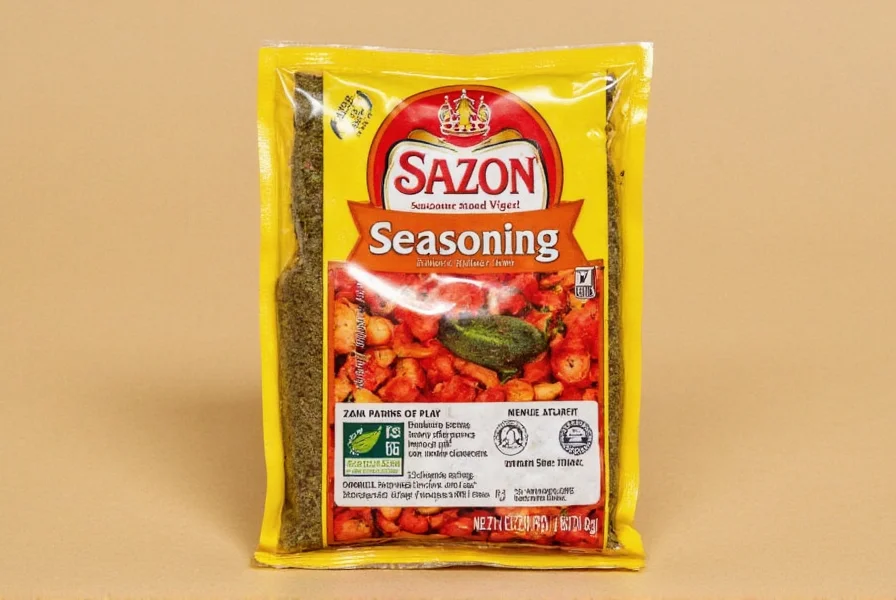
The humble sazon seasoning packet might look small, but it packs a serious punch when it comes to flavor. From transforming a basic pot of rice into a celebration of color and aroma to giving your favorite proteins a vibrant makeover, sazon is a kitchen staple worth keeping around.
Now that you've got the insider scoop on ingredients, uses, and even a buyer's guide, it's time to grab a packet (or five) and start experimenting. Who knows — your next family dinner might just become a new tradition, thanks to a tiny orange pouch!
So go ahead — shake things up. Your taste buds will thank you.










 浙公网安备
33010002000092号
浙公网安备
33010002000092号 浙B2-20120091-4
浙B2-20120091-4